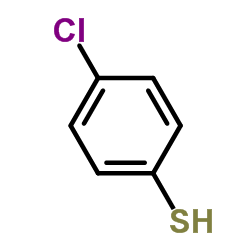2-([2-[(4-CHLOROPHENYL)SULFONYL]ETHYL]THIO)ACETIC ACID
Modify Date: 2024-01-09 17:36:09
![2-([2-[(4-CHLOROPHENYL)SULFONYL]ETHYL]THIO)ACETIC ACID Structure](https://image.chemsrc.com/caspic/468/175137-71-0.png)
2-([2-[(4-CHLOROPHENYL)SULFONYL]ETHYL]THIO)ACETIC ACID structure
|
Common Name | 2-([2-[(4-CHLOROPHENYL)SULFONYL]ETHYL]THIO)ACETIC ACID | ||
|---|---|---|---|---|
| CAS Number | 175137-71-0 | Molecular Weight | 294.77500 | |
| Density | 1.464g/cm3 | Boiling Point | 524.3ºC at 760 mmHg | |
| Molecular Formula | C10H11ClO4S2 | Melting Point | N/A | |
| MSDS | N/A | Flash Point | 270.9ºC | |
| Name | 2-[2-(4-chlorophenyl)sulfonylethylsulfanyl]acetic acid |
|---|---|
| Synonym | More Synonyms |
| Density | 1.464g/cm3 |
|---|---|
| Boiling Point | 524.3ºC at 760 mmHg |
| Molecular Formula | C10H11ClO4S2 |
| Molecular Weight | 294.77500 |
| Flash Point | 270.9ºC |
| Exact Mass | 293.97900 |
| PSA | 105.12000 |
| LogP | 3.01230 |
| Vapour Pressure | 8.06E-12mmHg at 25°C |
| Index of Refraction | 1.597 |
Synonym: Section 2 - COMPOSITION, INFORMATION ON INGREDIENTS
Risk Phrases: 22 36/37/38 Section 3 - HAZARDS IDENTIFICATION EMERGENCY OVERVIEW
Harmful if swallowed. Irritating to eyes, respiratory system and skin. Potential Health Effects Eye: Causes eye irritation. Skin: Causes skin irritation. Ingestion: Harmful if swallowed. May cause irritation of the digestive tract. Inhalation: Causes respiratory tract irritation. Chronic: Not available. Section 4 - FIRST AID MEASURES Eyes: Flush eyes with plenty of water for at least 15 minutes, occasionally lifting the upper and lower eyelids. Get medical aid. Skin: Get medical aid. Flush skin with plenty of water for at least 15 minutes while removing contaminated clothing and shoes. Ingestion: Get medical aid. Wash mouth out with water. Inhalation: Remove from exposure and move to fresh air immediately. If not breathing, give artificial respiration. If breathing is difficult, give oxygen. Get medical aid. Notes to Physician: Section 5 - FIRE FIGHTING MEASURES General Information: As in any fire, wear a self-contained breathing apparatus in pressure-demand, MSHA/NIOSH (approved or equivalent), and full protective gear. Extinguishing Media: Use water spray, dry chemical, carbon dioxide, or chemical foam. Section 6 - ACCIDENTAL RELEASE MEASURES General Information: Use proper personal protective equipment as indicated in Section 8. Spills/Leaks: Vacuum or sweep up material and place into a suitable disposal container. Section 7 - HANDLING and STORAGE Handling: Avoid breathing dust, vapor, mist, or gas. Avoid contact with skin and eyes. Storage: Store in a cool, dry place. Store in a tightly closed container. Section 8 - EXPOSURE CONTROLS, PERSONAL PROTECTION Engineering Controls: Use adequate ventilation to keep airborne concentrations low. Exposure Limits CAS# 175137-71-0: Personal Protective Equipment Eyes: Not available. Skin: Wear appropriate protective gloves to prevent skin exposure. Clothing: Wear appropriate protective clothing to prevent skin exposure. Respirators: Follow the OSHA respirator regulations found in 29 CFR 1910.134 or European Standard EN 149. Use a NIOSH/MSHA or European Standard EN 149 approved respirator if exposure limits are exceeded or if irritation or other symptoms are experienced. Section 9 - PHYSICAL AND CHEMICAL PROPERTIES Physical State: Solid Color: White Odor: Not available. pH: Not available. Vapor Pressure: Not available. Viscosity: Not available. Boiling Point: Not available. Freezing/Melting Point: 127 - 129 deg C Autoignition Temperature: Not available. Flash Point: Not available. Explosion Limits, lower: Not available. Explosion Limits, upper: Not available. Decomposition Temperature: Solubility in water: Specific Gravity/Density: Molecular Formula: C10H11ClO4S2 Molecular Weight: 294.78 Section 10 - STABILITY AND REACTIVITY Chemical Stability: Stable under normal temperatures and pressures. Conditions to Avoid: Incompatible materials. Incompatibilities with Other Materials: Strong oxidizing agents, strong acids, strong bases, acid chlorides, amines. Hazardous Decomposition Products: Hydrogen chloride, carbon monoxide, oxides of sulfur, carbon dioxide. Hazardous Polymerization: Not available. Section 11 - TOXICOLOGICAL INFORMATION RTECS#: CAS# 175137-71-0 unlisted. LD50/LC50: Not available. Carcinogenicity: 2-({2-[(4-chlorophenyl)sulphonyl]ethyl}thio)acetic acid - Not listed by ACGIH, IARC, or NTP. Section 12 - ECOLOGICAL INFORMATION Section 13 - DISPOSAL CONSIDERATIONS Dispose of in a manner consistent with federal, state, and local regulations. Section 14 - TRANSPORT INFORMATION IATA Not regulated as a hazardous material. IMO Not regulated as a hazardous material. RID/ADR Not regulated as a hazardous material. Section 15 - REGULATORY INFORMATION European/International Regulations European Labeling in Accordance with EC Directives Hazard Symbols: XN XI Risk Phrases: R 22 Harmful if swallowed. R 36/37/38 Irritating to eyes, respiratory system and skin. Safety Phrases: S 22 Do not breathe dust. S 26 In case of contact with eyes, rinse immediately with plenty of water and seek medical advice. S 36/37/39 Wear suitable protective clothing, gloves and eye/face protection. WGK (Water Danger/Protection) CAS# 175137-71-0: No information available. Canada None of the chemicals in this product are listed on the DSL/NDSL list. CAS# 175137-71-0 is not listed on Canada's Ingredient Disclosure List. US FEDERAL TSCA CAS# 175137-71-0 is not listed on the TSCA inventory. It is for research and development use only. SECTION 16 - ADDITIONAL INFORMATION N/A |
| hms554e08 |
![Ethanol,2-[(4-chlorophenyl)thio]- Structure](https://image.chemsrc.com/caspic/089/13457-98-2.png) CAS#:13457-98-2
CAS#:13457-98-2![Benzene,1-chloro-4-[(2-chloroethyl)thio]- Structure](https://image.chemsrc.com/caspic/233/14366-73-5.png) CAS#:14366-73-5
CAS#:14366-73-5 CAS#:106-54-7
CAS#:106-54-7![Benzene,1-chloro-4-[(2-chloroethyl)sulfonyl]- Structure](https://image.chemsrc.com/caspic/475/16191-84-7.png) CAS#:16191-84-7
CAS#:16191-84-7 CAS#:68-11-1
CAS#:68-11-1